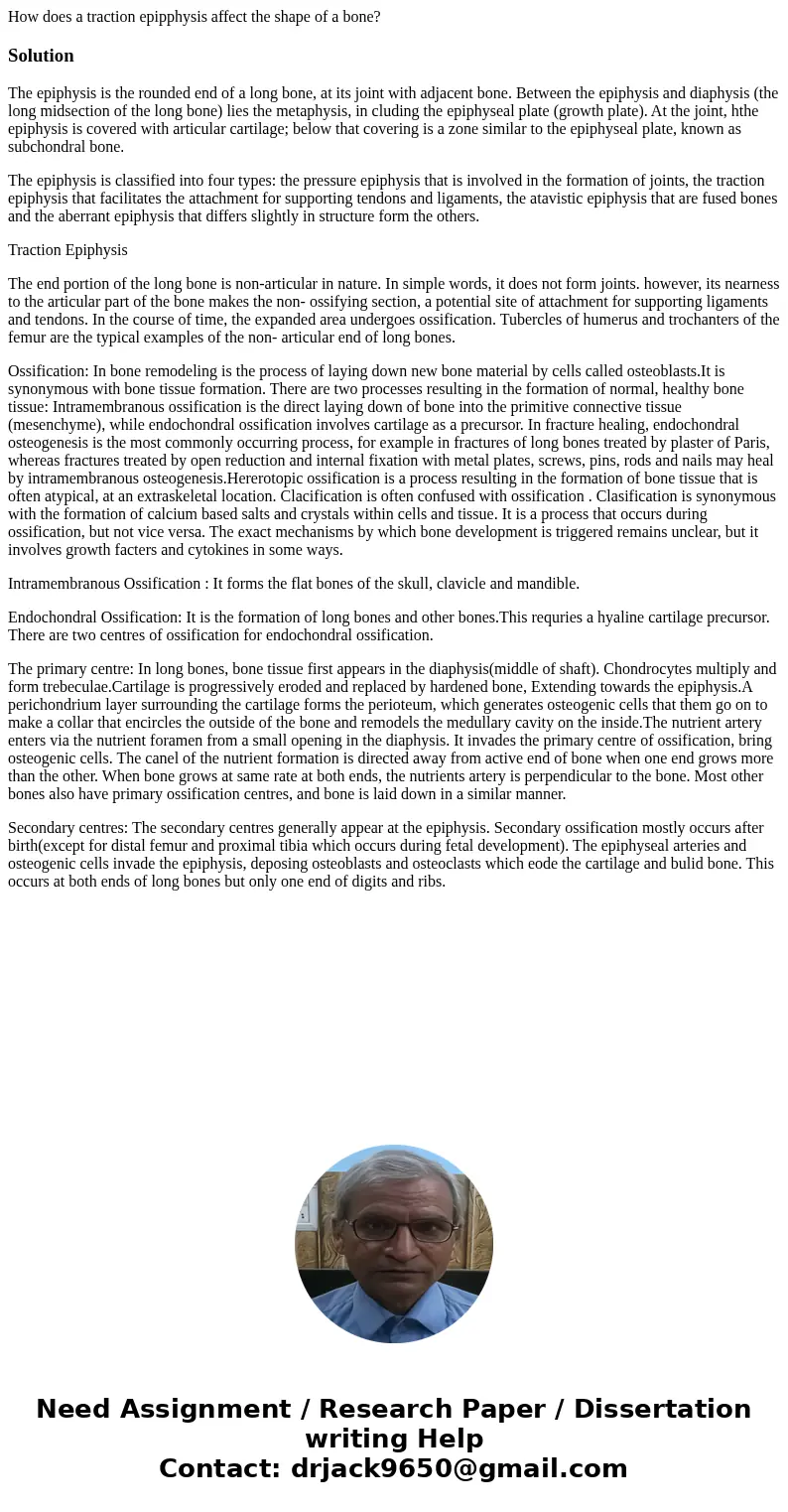How does a traction epipphysis affect the shape of a boneSol
How does a traction epipphysis affect the shape of a bone?
Solution
The epiphysis is the rounded end of a long bone, at its joint with adjacent bone. Between the epiphysis and diaphysis (the long midsection of the long bone) lies the metaphysis, in cluding the epiphyseal plate (growth plate). At the joint, hthe epiphysis is covered with articular cartilage; below that covering is a zone similar to the epiphyseal plate, known as subchondral bone.
The epiphysis is classified into four types: the pressure epiphysis that is involved in the formation of joints, the traction epiphysis that facilitates the attachment for supporting tendons and ligaments, the atavistic epiphysis that are fused bones and the aberrant epiphysis that differs slightly in structure form the others.
Traction Epiphysis
The end portion of the long bone is non-articular in nature. In simple words, it does not form joints. however, its nearness to the articular part of the bone makes the non- ossifying section, a potential site of attachment for supporting ligaments and tendons. In the course of time, the expanded area undergoes ossification. Tubercles of humerus and trochanters of the femur are the typical examples of the non- articular end of long bones.
Ossification: In bone remodeling is the process of laying down new bone material by cells called osteoblasts.It is synonymous with bone tissue formation. There are two processes resulting in the formation of normal, healthy bone tissue: Intramembranous ossification is the direct laying down of bone into the primitive connective tissue (mesenchyme), while endochondral ossification involves cartilage as a precursor. In fracture healing, endochondral osteogenesis is the most commonly occurring process, for example in fractures of long bones treated by plaster of Paris, whereas fractures treated by open reduction and internal fixation with metal plates, screws, pins, rods and nails may heal by intramembranous osteogenesis.Hererotopic ossification is a process resulting in the formation of bone tissue that is often atypical, at an extraskeletal location. Clacification is often confused with ossification . Clasification is synonymous with the formation of calcium based salts and crystals within cells and tissue. It is a process that occurs during ossification, but not vice versa. The exact mechanisms by which bone development is triggered remains unclear, but it involves growth facters and cytokines in some ways.
Intramembranous Ossification : It forms the flat bones of the skull, clavicle and mandible.
Endochondral Ossification: It is the formation of long bones and other bones.This requries a hyaline cartilage precursor. There are two centres of ossification for endochondral ossification.
The primary centre: In long bones, bone tissue first appears in the diaphysis(middle of shaft). Chondrocytes multiply and form trebeculae.Cartilage is progressively eroded and replaced by hardened bone, Extending towards the epiphysis.A perichondrium layer surrounding the cartilage forms the perioteum, which generates osteogenic cells that them go on to make a collar that encircles the outside of the bone and remodels the medullary cavity on the inside.The nutrient artery enters via the nutrient foramen from a small opening in the diaphysis. It invades the primary centre of ossification, bring osteogenic cells. The canel of the nutrient formation is directed away from active end of bone when one end grows more than the other. When bone grows at same rate at both ends, the nutrients artery is perpendicular to the bone. Most other bones also have primary ossification centres, and bone is laid down in a similar manner.
Secondary centres: The secondary centres generally appear at the epiphysis. Secondary ossification mostly occurs after birth(except for distal femur and proximal tibia which occurs during fetal development). The epiphyseal arteries and osteogenic cells invade the epiphysis, deposing osteoblasts and osteoclasts which eode the cartilage and bulid bone. This occurs at both ends of long bones but only one end of digits and ribs.

 Homework Sourse
Homework Sourse